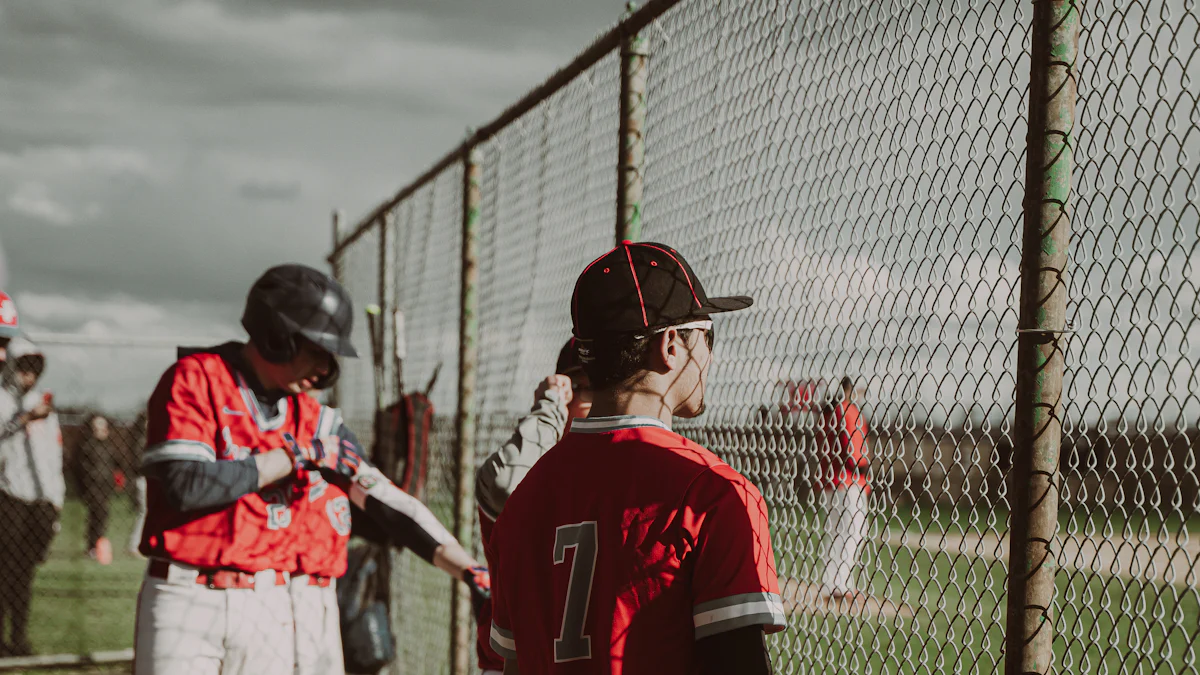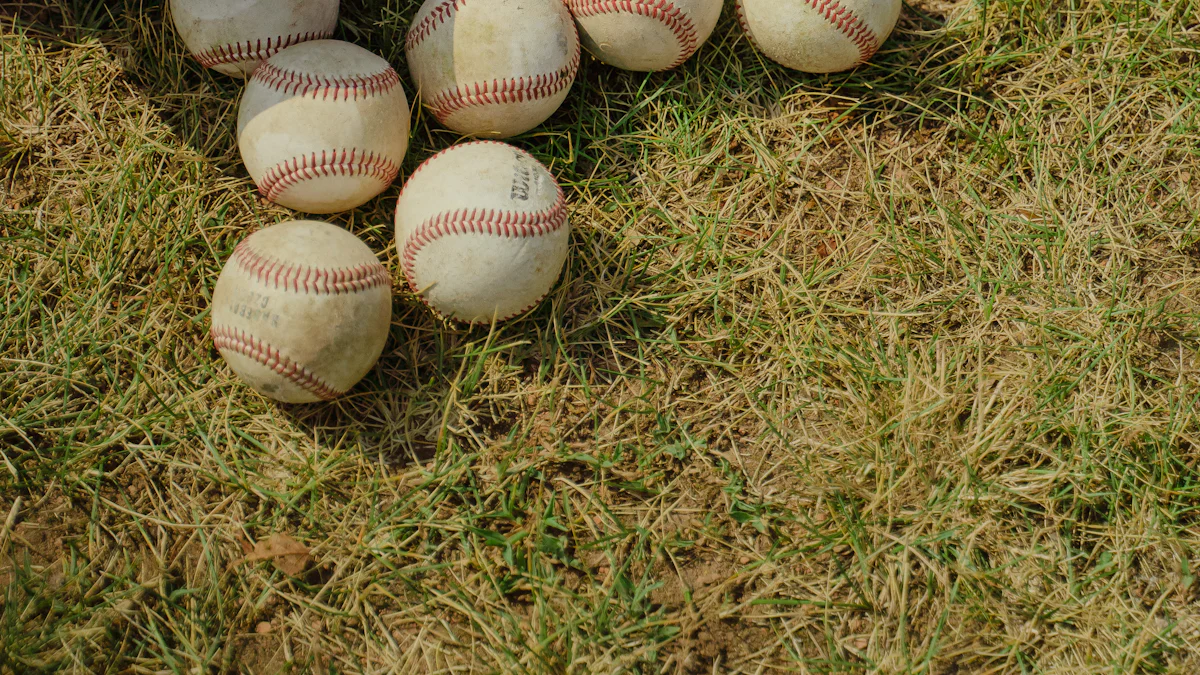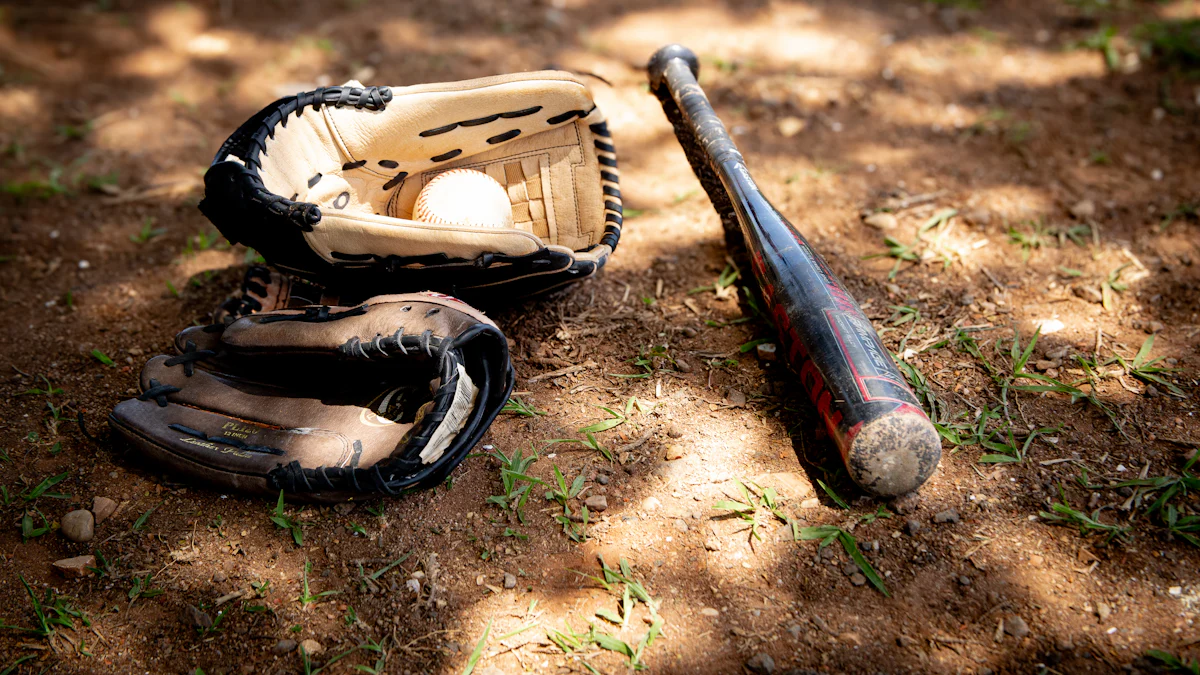
Lou Gehrig’s signature on baseballs holds immense historical significance. You find these autographed treasures as a testament to his legendary status in sports memorabilia. The rarity of lou gehrig signed baseballs adds to their allure, making them highly sought after by collectors. Each signed piece tells a story of a bygone era, capturing the essence of a baseball icon. As you delve into the world of autographs, you discover the unique charm and value these signed baseballs bring to enthusiasts and historians alike.
Key Takeaways
Lou Gehrig’s signed baseballs are rare and highly sought after, making them valuable collectibles for enthusiasts.
The distinct placement and style of Gehrig’s autograph, often on the side panel, add unique charm and recognition to each signed baseball.
Gehrig’s battle with ALS limited the number of autographs he could provide, increasing their rarity and emotional significance.
Proper display and preservation of signed baseballs are crucial; using a high-quality display case protects the autograph and enhances its presentation.
Factors such as condition, authenticity, and historical context significantly influence the market value of Gehrig’s signed baseballs.
Lou Gehrig’s legacy continues to inspire, with his contributions to baseball and awareness for ALS celebrated through events like Lou Gehrig Day.
Understanding Lou Gehrig’s Autograph Profile
Placement and Style of Gehrig’s Signature
When you examine Lou Gehrig’s autograph, you notice a distinct style that reflects his personality. Gehrig often signed baseballs with a neat and legible script, making his autograph easily recognizable. He typically placed his signature on the side panel of the baseball, rather than the sweet spot. This choice showed his respect for Babe Ruth, who often reserved the sweet spot for his own signature. The placement and style of Gehrig’s autograph add a unique charm to each signed baseball, making them a prized possession for collectors.
Frequency of Signed Baseballs
Lou Gehrig’s signed baseballs are rare treasures in the world of sports memorabilia. During his career, Gehrig signed fewer baseballs compared to other players of his era. This limited frequency contributes to the high value and desirability of his autographs today. As a collector, you understand that the scarcity of Gehrig’s signed baseballs enhances their allure, making them a coveted addition to any collection.
Impact of Gehrig’s Illness on Autograph Availability
Gehrig’s illness, amyotrophic lateral sclerosis (ALS), significantly impacted the availability of his autographs. As his health declined, he signed fewer baseballs, further increasing their rarity. This period in Gehrig’s life adds a poignant layer to the story behind each signed baseball. When you hold a Gehrig autograph, you hold a piece of history that reflects both his legendary career and his personal struggles. The limited availability of these autographs makes them even more valuable to collectors and enthusiasts.
A Brief Overview of Lou Gehrig’s Life and Career

Early Life and Entry into Baseball
You begin your journey into Lou Gehrig’s life by exploring his early years. Born in 1903 in New York City, Gehrig grew up in a modest household. His parents were German immigrants who instilled in him the values of hard work and perseverance. As a young boy, Gehrig showed a natural talent for baseball, which led him to play for Columbia University. His impressive performance caught the attention of the New York Yankees, and in 1923, he joined their ranks. This marked the beginning of a legendary career that would leave an indelible mark on baseball history.
Major Achievements and Contributions to the Sport
Lou Gehrig’s career with the Yankees was nothing short of extraordinary. You witness his incredible strength and stamina as he played over 2,000 consecutive games, earning him the nickname “The Iron Horse.” Gehrig’s batting average of .340, along with his 493 home runs and 1,995 RBIs, showcased his prowess at the plate. His contributions helped the Yankees secure seven World Series titles, cementing his status as one of the greatest players in the sport. Gehrig’s achievements extended beyond statistics; he embodied the spirit of baseball with his perseverance, humility, and excellence.
Legacy and Influence on Baseball History
Lou Gehrig’s legacy transcends the game of baseball. You see his enduring impact more than 80 years after his final big league game. Gehrig’s battle with amyotrophic lateral sclerosis (ALS) brought national attention to the disease, highlighting his determination and courage. In 1939, he became the first athlete to have his uniform number retired, a testament to his lasting influence. Gehrig’s induction into the Hall of Fame that same year further solidified his place in history. His character and sportsmanship set a standard for future athletes, and his legacy continues to inspire generations of baseball enthusiasts.
Market Value of Lou Gehrig Signed Baseballs
Current Market Trends and Price Guides
When you explore the market for Lou Gehrig signed baseballs, you notice a dynamic landscape. These rare autographed baseballs often fetch high prices due to their historical significance and scarcity. A single signed Lou Gehrig baseball typically sells for between $30,000 and $65,000. However, prices can soar beyond $100,000 depending on the condition and provenance. The demand for these pieces remains strong among collectors, driving up their market value. You find that price guides and auction results provide valuable insights into current trends, helping you understand the potential worth of these prized items.
Factors Influencing the Value of Signed Baseballs
Several factors influence the value of Lou Gehrig signed baseballs. First, the condition of the baseball plays a crucial role. A well-preserved ball with a clear signature commands a higher price. Second, authenticity is paramount. Collectors seek baseballs accompanied by a Certificate of Authenticity (COA) from reputable services. Third, the historical context adds value. Baseballs signed during significant events or periods in Gehrig’s career hold special appeal. Lastly, the presence of other signatures, such as Babe Ruth’s, can significantly enhance the baseball’s worth. Understanding these factors helps you appreciate why some signed baseballs achieve remarkable prices at auction.
Notable Auctions and Sales
You discover that notable auctions often feature Lou Gehrig signed baseballs, showcasing their enduring appeal. For instance, a Lou Gehrig single signed baseball once sold for $12,555, while a team-signed baseball from the 1937 New York Yankees World Series Champs fetched $7,495. Dual-signed baseballs featuring both Lou Gehrig and Babe Ruth have reached prices upwards of $82,950. These sales highlight the significant investment potential of Gehrig’s autographs. When you compare these figures to other sports memorabilia, such as a baseball signed by Eddie Plank selling for $228,000, you see the competitive nature of the market. Each auction tells a story of collectors’ passion and the timeless allure of Lou Gehrig’s legacy.
The Importance of Autograph Baseball Display
Displaying your Lou Gehrig signed baseballs properly enhances their appeal and preserves their value. A well-chosen display case not only showcases the autograph but also protects it from potential damage. Understanding how to display these valuable items can make a significant difference in maintaining their condition and worth.
Choosing the Right Display Case
Selecting the right display case is crucial for preserving your autographed baseballs. You should look for cases made from strong, clear materials like acrylic. This material provides excellent visibility and protection. A good display case keeps dust, dirt, and other elements away from the baseball, ensuring the autograph remains pristine. Consider cases that offer a clear view from all angles, allowing you to appreciate the signature fully. Personalization options, such as UV printing, can add a unique touch to your display, making it a standout piece in your collection.
Preserving the Integrity of the Signature
Maintaining the integrity of the autograph is essential for preserving its value. You should avoid exposing the baseball to direct sunlight, as UV rays can fade the signature over time. A display case with UV protection can help mitigate this risk. Additionally, keep the baseball in a stable environment with controlled temperature and humidity levels. Fluctuations in these conditions can cause the baseball to deteriorate, affecting the autograph’s clarity. Regularly check the condition of both the baseball and the display case to ensure they remain in optimal condition.
Our Display Case for Baseball
Our Custom Baseball Display Case with UV Printed Personalization offers an ideal solution for showcasing your autographed baseballs. Crafted from top-grade clear acrylic, this case provides robust protection while allowing a full view of the baseball from every angle. The case’s dimensions, 3.43″ × 3.43″ × 3.74″, make it perfect for displaying in homes, offices, or sports memorabilia stores. You can personalize the case with UV printing, adding a special touch to your collection. This display case not only preserves the autograph but also enhances its presentation, making it a valuable addition for collectors and sports fans alike.
Factors Affecting the Rarity and Worth of Gehrig’s Signed Baseballs
Historical Context and Limited Availability
Lou Gehrig’s signed baseballs hold a special place in sports memorabilia due to their historical context. You find that Gehrig played during a time when autographs were not as commercialized as they are today. This limited the number of signed baseballs available. Gehrig’s career, marked by his battle with amyotrophic lateral sclerosis (ALS), further restricted the number of autographs he could provide. As a result, each signed baseball becomes a rare artifact, capturing a moment in history that reflects both his athletic prowess and personal challenges. The scarcity of these autographs enhances their value, making them highly desirable among collectors.
Condition and Authenticity Verification
The condition of a Lou Gehrig signed baseball significantly impacts its worth. You should ensure that the baseball is well-preserved, with a clear and legible autograph. Exposure to elements like sunlight or moisture can degrade the signature, reducing its value. Authenticity verification is equally crucial. Collectors often seek baseballs accompanied by a Certificate of Authenticity (COA) from reputable services. This document serves as proof that the autograph is genuine, much like how signatures validate authenticity in legal and financial transactions. Without such verification, the baseball’s value may diminish, as buyers prioritize authenticity in their collections.
Provenance and Documentation
Provenance plays a vital role in determining the worth of Gehrig’s signed baseballs. You should look for documentation that traces the baseball’s history, providing a clear chain of ownership. This documentation can include sales receipts, letters of authenticity, or photographs of Gehrig signing the baseball. Provenance not only adds credibility to the autograph but also enriches its story, making it more appealing to potential buyers. In the world of collectibles, a well-documented history can significantly enhance the baseball’s value, as it assures collectors of its authenticity and historical significance.
Lou Gehrig’s Legacy in Baseball History

Enduring Impact on the Sport
Lou Gehrig’s legacy extends beyond mere statistics. You see his influence in the perseverance, humility, and excellence he embodied. Gehrig set a standard for future athletes with his character and sportsmanship. His battle with amyotrophic lateral sclerosis (ALS) brought national attention to the disease, increasing research and awareness. Gehrig’s name still conjures images of greatness, even though he played his last game in 1939. Teaming with Babe Ruth, Gehrig formed one of baseball’s greatest offensive duos. His entire 17-year career as a first baseman with the New York Yankees helped the team secure seven World Series titles. Gehrig’s impact on baseball is measured not just in numbers but in the profound influence he had on the sport and its fans. His legacy, forged through remarkable statistics and poignant words, solidifies him as one of baseball’s greatest figures. You remember him not only for his athletic achievements but for the indomitable spirit that made him truly “the luckiest man on the face of the earth.”
Commemoration and Recognition in Modern Times
In modern times, you find numerous ways in which Lou Gehrig’s legacy is commemorated and recognized. His story continues to inspire, with his life and career celebrated through various mediums. The annual Lou Gehrig Day, observed by Major League Baseball, honors his contributions and raises awareness for ALS. This event serves as a reminder of Gehrig’s enduring impact on the sport and society. Statues and plaques in stadiums across the country pay tribute to his achievements, ensuring that new generations of fans learn about his legacy. Documentaries and books recount his life, offering insights into his remarkable journey. You see how Gehrig’s influence extends beyond the baseball diamond, touching the lives of those who admire his courage and determination. His legacy remains vibrant, more than 80 years after his final big league game, as a testament to the lasting power of his story.
Lou Gehrig signed baseballs hold immense historical and monetary significance. These autographs capture a piece of baseball history, making them valuable to collectors. You should preserve and display these autographs properly to maintain their value. A well-chosen display case protects the signature and enhances its presentation. Gehrig’s legacy in baseball history remains strong. His contributions to the sport and his battle with ALS continue to inspire. By understanding the importance of these signed baseballs, you honor Gehrig’s enduring impact on the game.
FAQ
What makes Lou Gehrig’s signed baseballs so valuable?
Lou Gehrig’s signed baseballs hold immense value due to their rarity and historical significance. Gehrig signed fewer baseballs compared to his contemporaries, making each autograph a rare find. His legendary status in baseball history and the emotional impact of his battle with ALS further enhance the desirability of these autographs among collectors.
How can I verify the authenticity of a Lou Gehrig signed baseball?
To verify authenticity, you should seek a Certificate of Authenticity (COA) from reputable authentication services. These certificates confirm that experts have examined the autograph and deemed it genuine. Additionally, provenance documentation, such as sales receipts or photographs, can provide further assurance of authenticity.
What factors influence the market value of Gehrig’s signed baseballs?
Several factors affect the market value of Gehrig’s signed baseballs. The condition of the baseball and the clarity of the signature play crucial roles. Authenticity verification and historical context also contribute to value. Baseballs signed during significant events or featuring additional signatures, like Babe Ruth’s, can command higher prices.
How should I display my Lou Gehrig signed baseball to preserve its value?
You should use a high-quality display case made from clear acrylic to showcase your signed baseball. This material offers excellent protection and visibility. Ensure the case provides UV protection to prevent fading from sunlight. Maintain a stable environment with controlled temperature and humidity to preserve the autograph’s integrity.
Are there any notable sales of Lou Gehrig signed baseballs?
Yes, several notable sales highlight the value of Gehrig’s signed baseballs. A single signed baseball once sold for $12,555, while a dual-signed baseball with Babe Ruth fetched upwards of $82,950. These sales demonstrate the strong demand and investment potential of Gehrig’s autographs in the collectibles market.
How did Lou Gehrig’s illness affect the availability of his autographs?
Gehrig’s illness, amyotrophic lateral sclerosis (ALS), significantly reduced the number of autographs he could provide. As his health declined, he signed fewer baseballs, increasing their rarity. This limited availability adds a poignant layer to each autograph, reflecting both his career and personal struggles.
What is the significance of Lou Gehrig Day in Major League Baseball?
Lou Gehrig Day, observed annually by Major League Baseball, honors Gehrig’s contributions to the sport and raises awareness for ALS. This event celebrates his legacy and enduring impact on baseball and society. It serves as a reminder of Gehrig’s courage and determination, inspiring new generations of fans.
Can the presence of other signatures on a baseball affect its value?
Yes, the presence of other signatures can significantly enhance a baseball’s value. Dual-signed baseballs featuring both Lou Gehrig and Babe Ruth are particularly valuable. These autographs capture the essence of a historic era in baseball, making them highly sought after by collectors.
How does provenance affect the worth of a signed baseball?
Provenance plays a vital role in determining a signed baseball’s worth. Documentation that traces the baseball’s history, such as sales receipts or letters of authenticity, adds credibility to the autograph. A well-documented history assures collectors of the baseball’s authenticity and enhances its value.
Why is Lou Gehrig considered a baseball legend?
Lou Gehrig is considered a baseball legend due to his extraordinary achievements and enduring impact on the sport. His impressive statistics, including a .340 batting average and 493 home runs, showcase his prowess. Gehrig’s perseverance, humility, and sportsmanship set a standard for future athletes, solidifying his legacy in baseball history.
